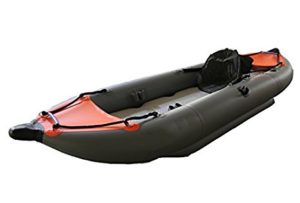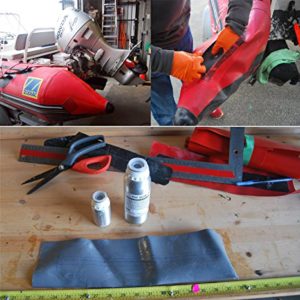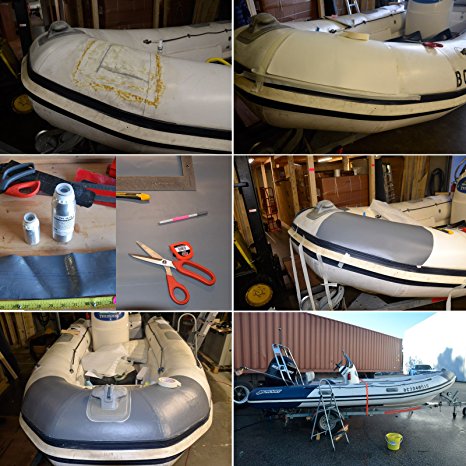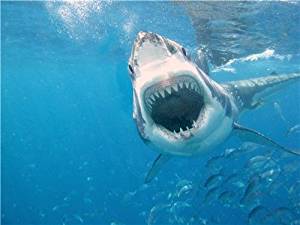When it comes to inflatable kayaks and canoes, many people still question whether they are durable and dependable. We are here to tell you that if you choose carefully, you can get an inflatable kayak that will last longer than you may ever expect. The important part of choosing isn’t based on the name or the price that you will pay for it. It has to do mostly with the way the inflatable boat construction was handled.
How Inflatable Boats Are Made
When constructing an inflatable boat, there is a lot of effort put into ensuring that it is perfect. Although the plastic or vinyl may look flimsy, it isn’t. It has gone through an extensive melting process to ensure that it is made in a uniformed thickness. There are not going to be any thick areas or thin areas within the polyethylene plastic. The same is true for boats that are made using Hypalon, PVC, or Neoprene.
Once the materials that are being used have been heated and reached a consistent thickness, the cooling process will begin. We put a lot of effort into the cooling aspect of these boats because there is a high risk of them becoming warped. If it warps, it may not fit together properly when joined.
Some boats are made using several sheets of formed material, because it is easier to work with. The catch to that is that many inflatables fail where they are joined together in seams. That is why we do a double layer seam that is welded and taped together on both sides. This ensures it will remain air tight and never leak out when you are using it on the water.
Understanding Inflatable Boat Materials
 Many inflatable boats and canoes are made using Hypalon. It is a material that is commonly used for handling high temperature products, waste water, and other things that may weaken other types of material. It is able to handle contaminated stuff that needs to be contained and it doesn’t weaken after constant exposure to UV rays. That is why we use it on the exterior of our boats.
Many inflatable boats and canoes are made using Hypalon. It is a material that is commonly used for handling high temperature products, waste water, and other things that may weaken other types of material. It is able to handle contaminated stuff that needs to be contained and it doesn’t weaken after constant exposure to UV rays. That is why we use it on the exterior of our boats.
From there, you also have Neoprene on the inside of the boats shell. It is a synthetic rubber that is best suited for inside the boat since it has already proven itself to be able to block air from seeping out and resists oil. It is also a material that has been used for a variety of things throughout history.
PVC is a plastic polymer. It is easy to patch if you end up somehow damaging it, but many owners say that it does not always hold air as well as it should. This is even truer if they leave it out in the sun for an extended period of time. These boats are often cheaper to own, but if you are a diehard fan of inflatable boating or kayaking and you hope to leave it aired up while you pull it behind your sailboat, it may not be what you were hoping for.
Inflatable Boat Construction
When it comes to inflatable kayaks and canoes, many people still question whether they are durable and dependable. We are here to tell you that if you choose carefully, you can get an inflatable kayak that will last longer than you may ever expect. The important part of choosing isn’t based on the name or the price that you will pay for it. It has to do mostly with the way the inflatable boat construction was handled.
How Inflatable Boats Are Made
When constructing an inflatable boat, there is a lot of effort put into ensuring that it is perfect. Although the plastic or vinyl may look flimsy, it isn’t. It has gone through an extensive melting process to ensure that it is made in a uniformed thickness. There are not going to be any thick areas or thin areas within the polyethylene plastic. The same is true for boats that are made using Hypalon, PVC, or Neoprene.
Once the materials that are being used have been heated and reached a consistent thickness, the cooling process will begin. We put a lot of effort into the cooling aspect of these boats because there is a high risk of them becoming warped. If it warps, it may not fit together properly when joined.
Some boats are made using several sheets of formed material, because it is easier to work with. The catch to that is that many inflatables fail where they are joined together in seams. That is why we do a double layer seam that is welded and taped together on both sides. This ensures it will remain air tight and never leak out when you are using it on the water.
Understanding Inflatable Boat Materials
Many inflatable boats and canoes are made using Hypalon. It is a material that is commonly used for handling high temperature products, waste water, and other things that may weaken other types of material. It is able to handle contaminated stuff that needs to be contained and it doesn’t weaken after constant exposure to UV rays. That is why we use it on the exterior of our boats.
From there, you also have Neoprene on the inside of the boats shell. It is a synthetic rubber that is best suited for inside the boat since it has already proven itself to be able to block air from seeping out and resists oil. It is also a material that has been used for a variety of things throughout history.
PVC is a plastic polymer. It is easy to patch if you end up somehow damaging it, but many owners say that it does not always hold air as well as it should. This is even truer if they leave it out in the sun for an extended period of time. These boats are often cheaper to own, but if you are a diehard fan of inflatable boating or kayaking and you hope to leave it aired up while you pull it behind your sailboat, it may not be what you were hoping for.
